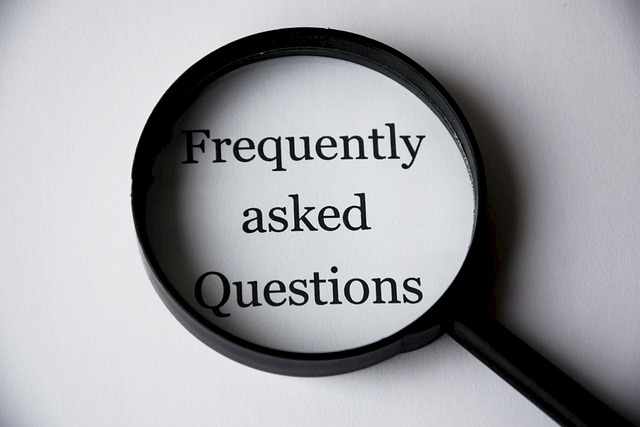Creating a solid business plan is an important step for a business owner.
Not only can it guide your business through its initial stages, but also helps you secure funding, attract investors, and establish long-term goals.
While we are professional business plan writers here at Smart Business Plans, if you’re prepared to put in the time and effort, you may want to give writing your own business plan a try and see how you go.
So in this guide we walk you through the process of writing a business plan for Australian and New Zealand business owners, providing practical tips and insights along the way. We’ll cover essential sections like financial projections, market research, and mission statements, making it a valuable tool for both securing funding or guiding business growth.
Let’s jump in!
Key takeaways:
-
Your business plan typically services two purposes:
-
Helps you define your purpose, goals and a roadmap to get there.
-
Showcases your business to a lender, investor or other stakeholder.
-
-
Writing a business plan can be very time consuming. If you plan on using a generic template, be sure you have the time to invest, and that you’re likely to get the results you want base on your strategy, communication and layout skill set.
-
If you want to use an AI tool, be cautious that the tone and approach doesn’t come across as ‘obviously’ AI generated and generic. Business plans are most effective when they are highly tailored to the specific audience and their needs. Very generic business plans can actually be counter-productive.
-
If your business plan is for a bank loan, there are very specific things a lender is looking for in your business plan. It’s important to know what these are so you can communicate to your audience most effectively.
-
A professional business plan writer can take the time and hard work of your plate, while also ensuring you get a business plan that showcases your business in the best light possible.
What is a Business Plan?

“A business plan is a formal written document that outlines your business goals, the strategy for achieving them, and the time frame for success.” says Nadine Connell of Smart Business Plans Australia.
“It’s designed to cover various aspects of your business, including the market analysis, organisational structure, products or services offered, marketing and sales strategies, and financial cash flow projections.” she says.
A business plan serves as a roadmap for your business, guiding your decisions and helping you stay on track.
Why is a Business Plan Important?
Creating a business plan is essential for several key reasons:
Clarifies Vision and Direction: A business plan is a powerful tool that helps articulate your business vision and the steps needed to achieve it. By laying out a clear strategy, it ensures that you and your team are aligned with the same goals and objectives. This clarity is crucial for making informed decisions and steering your business towards success.
Secures Funding: When seeking funding from investors or lenders, a detailed business plan is indispensable. Financial institutions and potential investors use your business plan to assess the viability and profitability of your business. It provides them with the confidence that you have a well-thought-out strategy and understand the financial requirements of your venture.
Attracts Investors: A well-written business plan not only secures funding but also attracts potential investors. It showcases your business’s potential for growth and profitability, making it an appealing investment opportunity. Investors are more likely to commit funds if they can see a clear path to success and a return on their investment.
Manages Growth: As your business grows, a business plan helps manage this growth by setting clear milestones and objectives. It serves as a roadmap, guiding you through each stage of your business’s development. Regularly updating your business plan ensures that it remains relevant and helps you stay on track.
Identifies Risks: A comprehensive business plan identifies potential risks and provides strategies to mitigate them. By anticipating challenges and preparing for them, you can reduce the impact of these risks on your business. This proactive approach helps ensure long-term stability and success.
Key Components of a Business Plan

1. Executive Summary
The executive summary is the first section of your business plan, but it should be written last. It provides a concise overview of your entire business plan, highlighting the key points. The executive summary should include:
-
Business name and location
-
Mission statement
-
Products or services offered
-
Basic information about the leadership team, employees, and location
-
Financial information and growth plans
Tip: Keep it brief and compelling to capture the reader’s attention and make them want to read more.
2. Company Description
This section provides detailed information about your business. It should include:
-
Company history
-
Nature of the business and the market needs it addresses
-
Business goals and objectives
-
Legal structure (e.g., sole proprietorship, partnership, corporation)
-
Key employees and their roles
-
Location and facilities
Tip: Highlight what makes your business unique and how it stands out from the competition.
3. Market Analysis
A thorough market analysis is essential to understand your business concept fits into your industry, market, and compares to competitors. This section should cover:
-
Industry description and outlook
-
Target market demographics and needs
-
Market size and growth potential
-
Competitive analysis (identify your competitors, their strengths and weaknesses, and your competitive advantage)
-
Market trends and insights
Tip: Use reliable data sources and provide visual aids like charts and graphs to present your findings clearly.
4. Organisation and Management

Detail the organisational structure of your business. This section should include:
-
Organisational chart
-
Information about the ownership structure
-
Backgrounds and qualifications of the management team
-
Roles and responsibilities of each team member
-
Advisory board or board of directors, if applicable
Tip: Highlight the experience and expertise of your team to build credibility with investors and stakeholders.
5. Products or Services
Describe the products or services your business offers. This section should include:
-
Detailed description of each product or service
-
The benefits and features of your products or services
-
Pricing strategy
-
Product lifecycle
-
Research and development activities
-
Intellectual property (patents, trademarks, etc.)
Tip: Focus on how your products or services solve a problem or meet a need for your target market.
6. Marketing Strategy and Sales Strategy

Your marketing plan and sales strategy outline how you plan to attract and retain customers. This section should cover:
-
Marketing strategy (branding, positioning, and messaging)
-
Marketing tactics (advertising, social media, email marketing, content marketing, etc.)
-
Sales strategy (sales process, sales channels, and sales team)
-
Customer acquisition and retention strategies
-
Metrics and KPIs to measure success
Tip: Be specific about your marketing and sales tactics and how they align with your target market.
7. Funding Request
If you are seeking a bank loan or investor, this section should outline your funding requirements. Include:
-
How much funding you need
-
How the funds will be used (e.g., equipment, salaries, marketing strategy, etc.)
-
Future funding requirements over the next five years
-
Potential funding sources (investors, loans, grants, etc.)
-
Financial projections to support your funding request
Tip: Be realistic and detailed about your funding needs and how they will contribute to your business’s growth and success.
8. Financial Projections

Financial projections provide a forecast of your business’s financial performance. This section should include:
-
Income statements
-
Cash flow statements
-
Balance sheets
-
Break-even analysis
-
Financial assumptions
Tip: Use realistic and conservative estimates, and back up your projections with data and research.
9. Appendix
The appendix includes additional information and supporting documents that are relevant for business planning. This may include:
-
Resumes of key team members
-
Product images or prototypes
-
Legal documents (e.g., incorporation papers, patents)
-
Market research data
-
Detailed financial projections
Tip: Use the appendix to provide supplementary information without cluttering the main sections of your business plan.
5 Tips for Writing Your Business Plan
-
Be Clear and Concise: Avoid jargon and use clear, straightforward language. Your business plan should be easy to read and understand.
-
Be Realistic: Set realistic goals and provide honest assessments. Investors can easily spot overly optimistic projections.
-
Customise Your Plan: Tailor your business plan to your audience. If you are seeking funding, focus on financial aspects. If it’s for internal use, focus on strategy and operations.
-
Use Visuals: Enhance your business plan with charts, graphs, and images to make it more engaging and easier to understand.
-
Review and Revise: Regularly update your business plan to reflect changes in your business and market conditions.
5 Common Mistakes to Avoid

-
Lack of Research: Ensure your market analysis is thorough and based on reliable data.
-
Unrealistic Financial Projections: Overly optimistic financial forecasts can undermine your credibility.
-
Ignoring Competition: Acknowledge your competitors and explain how you will differentiate your business.
-
Incomplete Plan: Make sure all sections of your business plan are complete and provide sufficient detail.
-
Not Defining the Target Market: Clearly identify your target market and understand their needs and preferences.
Insights from Business Plan Experts

Nadine Connell, Co-Owner of Smart Business Plans, has written more than 3,300 business plans for her clients over the past 14 years. “A business plan is not just a document; it’s a strategic tool that can drive your business towards its goals. Sometimes the process of writing the plan is just as important as the document itself. That’s because it challenges your thinking and crystalises your goals. With that clarity and direction, stakeholders are aligned.” she says.
That’s also why it can be so valuable to work with a professional business plan writer.
External Resources
For further guidance on writing a business plan, consider visiting the following authoritative websites:
-
Business.gov.au: Offers comprehensive resources and templates for creating a business plan.
-
Entrepreneur: Provides expert advice and examples of successful business plans.
FAQs

What financial information should be included?
Your business plan should typically include detailed financial projections if you are seeking a bank loan or investor, such as:
-
Income Statements: Forecasts of your revenue, expenses, and profits over a specific period.
-
Cash Flow Forecasts: Projections of cash inflows and outflows, helping to ensure you have sufficient liquidity.
-
Balance Sheets: A snapshot of your business’s financial position, including assets, liabilities, and equity.
-
Break-even Analysis: An analysis of when your business will start to generate profits.
-
Financial Assumptions: The assumptions underpinning your financial projections, such as market size, pricing strategy, and cost estimates.
How long should it be?
The length of a business plan can vary depending on the complexity of the business and its goals. Generally, a comprehensive business plan can range from 20 to 40 pages, including all necessary details and supporting documents.
However, the length is less important than the quality and clarity of the content. Ensure that each section is thorough and informative and don’t feel the need to ‘pad’ the information just for the sake of it.
How can I make it stand out to investors?
To make your business plan stand out to investors, focus on the following:
-
Create a clear and compelling executive summary. Capture the investor’s interest right from the start with a concise and compelling overview.
-
Include thorough and well-researched market analysis that demonstrates your business differentiates from the competition (we help with this).
-
Ensure your business plan is well-organised, free of errors, and visually appealing. Use charts, graphs, and images to enhance readability and engagement.
-
Outline clear and actionable strategies for marketing, sales, and operations that demonstrate your business’s potential for success.
Conclusion
Writing a business plan is a critical step in launching and growing your business. It serves as a roadmap, guiding you through each stage of your business journey and helping you stay focused on your goals. A well-crafted business plan can attract investors, secure funding, and provide a clear strategy for success.
By following the steps outlined in this guide, you might be able to produce a comprehensive and compelling business plan that effectively communicates your vision and strategy, if you have the time and communication skills to invest.
Remember to be clear, realistic, and thorough in your approach, and regularly update your plan to keep it relevant and reflective of your business’s progress and market conditions.
Additional Resources

-
Business Plan Templates: There are many free and paid business plan templates available online to help you get started. Just be sure you want to put in the many hours usually needed to get a great result. At Smart Business Plans we have developed our own highly effective, professional document structures that suit different purposes and audiences.
-
Professional Business Plan Writers: If you’d like to work with a professional business plan writer, the team at Smart Business Plans can help. Call 1300 262 098.

